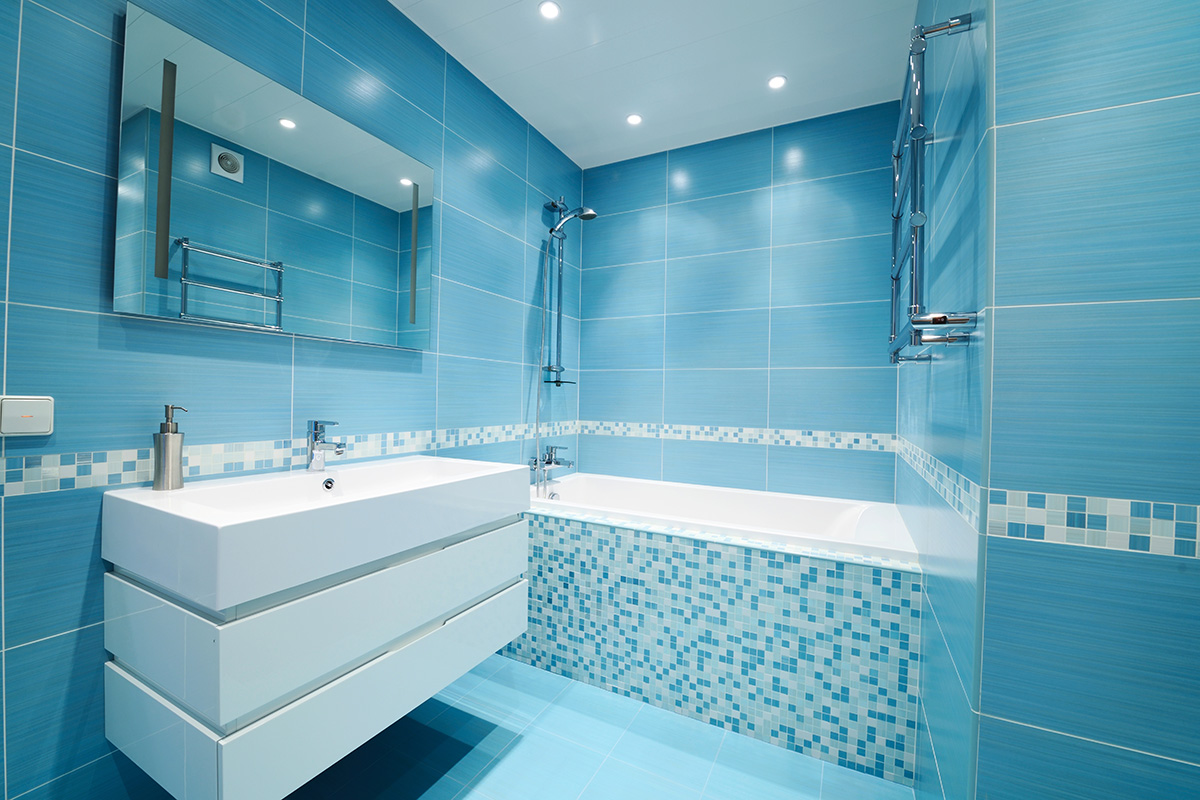There are floor ceramic tiles out there for every bathroom, regardless of size or design. Finding the ideal bathroom tile design is only the first step. You must also think about the best installation method, the grout colors, how to integrate it into the rest of your design, and many other factors. Our bathroom floor ceramic tiles suggestions include all the various applications for this durable, low-maintenance choice.
Additionally, we have a tonne of advice from professionals along the journey.
Bathroom floor tiles that have been properly installed are entirely waterproof, stain resistant, and easy to maintain. The best materials for low-maintenance bathroom floors that won’t break the bank are ceramic and porcelain.
However, if you insist on using stone or encaustic tiles, make sure they are regularly re-sealed and very tightly sealed. Thus, they will maintain their best appearance.
Ideas for bathroom floor tiles
The good news is that there is a tonne of designs, colors, and shapes available when it comes to bathroom tile ideas. Additionally, many beautiful tiles are affordable. The most popular bathrooms make use of the numerous options currently available.
It would be heresy to pick just one tile out of all the stunning ones available. Nowadays, it’s common to find bathrooms with two or three distinct tile styles. Louisa Morgan, the creative director of Mandarin Stone, advises mixing surface texture and shapes as well.

It brings the living room’s coziness into the bathroom by using tiles to create a pattern that looks like a rug. A bathroom with a tiled floor can occasionally seem a touch cold. However, adding interest to the room by combining contrasting colors to simulate a rug effect, advises Jo Sangster, the senior designer at Ripples London.
We advise using mosaic tiles on a sheet since they make it simple to give the room a rug-like appearance. This might be improved upon by placing black tiles with dots in the middle of the “rug” or even by arranging the tiles to form words.
A diagonal floor tile arrangement, in which the tiles are positioned at a 45-degree angle to the wall, can produce significant rewards in terms of first impressions.
A tried-and-true method for enlarging small bathrooms is to lay tiles on the diagonal, which blurs the room’s general appearance. You can also hide a bathroom with out-of-square walls by using a floor with diagonally laid tiles. This makes uneven walls less noticeable because the tiles don’t have to match up perfectly along the edges.
One drawback of putting tiles at an angle is that it is often thought to be considerably more difficult to get smart results than working in straight lines, which could deter enthusiastic DIYers. To “get the look” without the stress, consider square tiles with a diagonal pattern, like these (Bert & May stocks similar).
Terrazzo is the trend-driven bathroom tile that reemerged on the interior scene in 2018 and is still going strong today. Its eye-catching yet modest colors and unusual speckled pattern. Terrazzo is expected to overtake marble as the material with the most enduring appeal, according to trend forecasters. It is hence a popular option for contemporary bathroom tile designs.

With imitation porcelain as your bathroom floor tile inspiration, you can ride the terrazzo train for less. These are also less expensive per square meter and simpler to maintain than standard terrazzo.
According to Mandarin Stone’s creative director Louisa Morgan, traditional terrazzo frequently has usage restrictions due to the expense and tile thickness. “Porcelain tiles with terrazzo-inspired patterns are the ideal method to enjoy the aesthetic effect of classic terrazzo while having all the benefits of a porcelain tile.”
The edges of your tiled floor can be finished with borders to give them a really tidy finish and provide further design interest. Porcelain can be made to be very durable, available in thin thicknesses, and maintenance-free.
Many tile patterns come with a coordinating border tile, which typically has the same colors as the main tile but a different design. If a tile collection has a variety of color choices, you may also use the border as a chance to switch colors for a more striking result.
Even if you don’t have to adhere to the border’s design in terms of shape or pattern, doing so could make the border appear out of place and as though you ran out of tiles. When in doubt, pick a plain border tile for a sophisticated, frame-like appearance.

Which bathroom floor tiles are the best?
For bathroom floors, you can choose wood, laminate, or even carpet (hi, the 1980s), but ceramic or porcelain tiles are the best option for durability and low-stress use.
After that, we would suggest Luxury Vinyl Tiles since they feel warmer underfoot. Bathrooms can also employ encaustic and natural stone tiles, but these typically require a little more upkeep. If they’ve fallen in love with a certain style, many people think it’s worth the effort to brush on sealant once a year.
Which material, ceramic or porcelain, is better for bathrooms?
Although they frequently resemble one another and both have floor-friendly variations, porcelain tiles will last longer than ceramic tiles because they are denser and less porous.
On the other hand, DIYers prefer ceramic tiles since they are typically less expensive than porcelain and can be cut more easily without the need for pricy power tools. Whichever option you select, be sure to check for a Porcelain Enamel Institute rating (PEI rating) of at least two; a PEI rating of three is preferred on floors and is deemed “appropriate for typical residential use.”











Your comment submitted.